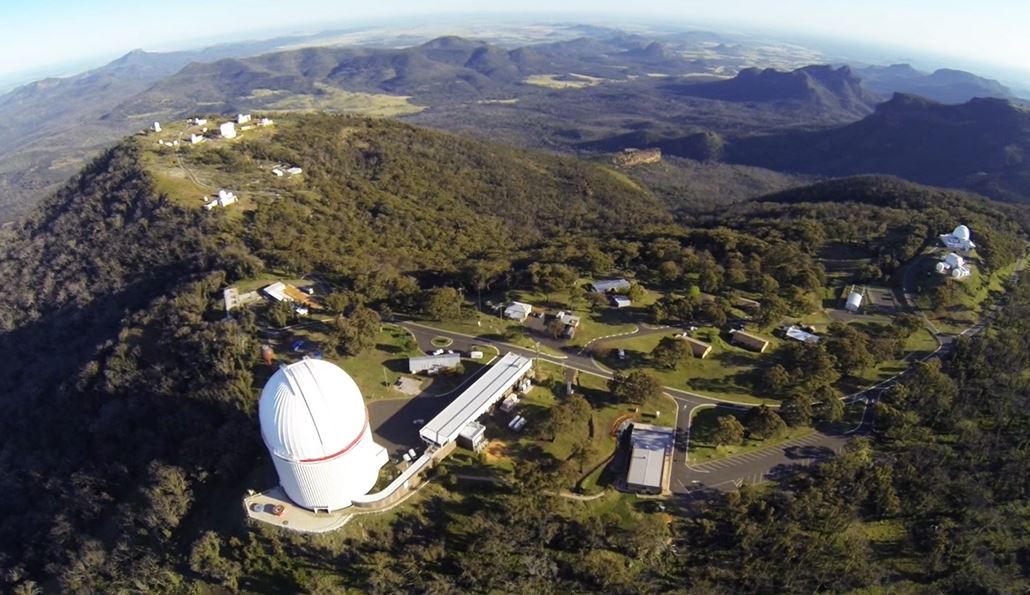AUGUST 3, 1963: U.S. Government sensors detect an airburst explosion near the Prince Edward Islands off the southern coast of South Africa. At first it was thought that this was caused by a clandestine nuclear device tested by that nation, but later study revealed that it was caused by an incoming small stony asteroid. Airburst explosions like this are discussed in a previous “Special Topics” presentation.
AUGUST 5, 1864: Italian astronomer Giovanni Donati visually observes the spectrum of Comet Tempel 1864 II, the first time that a comet’s spectrum was observed. Donati detected three “bands” in the comet’s spectrum, that are now known to be due to diatomic carbon.
AUGUST 5, 2126: Comet 109P/Swift-Tuttle, the parent comet of the Perseid meteors, will pass 0.153 AU from Earth, and should be a conspicuous naked-eye object. Comet Swift-Tuttle is a future “Comet of the Week.”
AUGUST 6, 1835: Etienne Domouchel and Francesco de Vico at the Vatican Observatory in Rome recover Comet 1P/Halley on its return that year. This was the second predicted return of Comet Halley following the determination of its periodic nature by Edmond Halley. The comet is the subject of a previous “Special Topics” presentation, and its most recent return in 1986 is a previous “Comet of the Week.”
AUGUST 6, 2014: ESA’s Rosetta mission arrives at Comet 67P/Churyumov-Gerasimenko, around which it subsequently goes into orbit. Rosetta would spend the next two years performing a detailed examination of the comet before landing on the surface following the completion of its mission in September 2016. Comet Churyumov-Gerasimenko is this week’s “Comet of the Week.”
AUGUST 6, 4393: According to a 2017 study by astronomers Rainer Kracht and Zdenek Sekanina, Comet Hale-Bopp C/1995 O1 will next pass through perihelion at a heliocentric distance of 0.915 AU. Comet Hale-Bopp is a previous “Comet of the Week.”
AUGUST 7, 1996: A team of scientists led by NASA geologist David McKay announces that they have found “microfossils” and other evidence of possible life in the meteorite ALH 84001 which had been found to have come from Mars. The announcement set off widespread fascination and debate, and although the team’s claims are not considered as being confirmed, the examination of this and other Martian meteorites continues. This topic is the subject of this week’s “Special Topics” presentation.

AUGUST 7, 2006: Rob McNaught with the Siding Spring Survey in New South Wales discovers a comet, now known as Comet McNaught C/2006 P1. When Comet McNaught passed through perihelion the following January it was bright enough to see during daytime hours and it became the 21st Century’s first “Great Comet.” It is a previous “Comet of the Week.”
AUGUST 7, 2027: The Apollo-type asteroid (137108) 1999 AN10 will pass 0.0027 AU (10 lunar distances) from Earth. With an approximate diameter of 1 km this is one of the largest asteroids to come this close to Earth within the near-term future.
AUGUST 8, 1769: French astronomer Charles Messier discovers a comet (new style designation C/1769 P1). The comet subsequently became a conspicuous naked-eye object and was the brightest comet that Messier discovered. It is a future “Comet of the Week.”
AUGUST 8, 1991: Radar experiments with the 70-meter antenna at Goldstone, California and the Very Large Array in New Mexico carried out by a team of astronomers led by Martin Slade provide evidence for the existence of water ice in permanently-shadowed craters near Mercury’s north pole. This ice, the presence of which has since been confirmed by NASA’s MESSENGER spacecraft, and how it got there is discussed in a future “Special Topics” presentation.
AUGUST 8, 2013: Scottish scientist Daniel Garcia Yarnoz and his colleagues publish a list of the top dozen “easily retrievable objects” among the small near-Earth asteroids known at that time. This list was intended to be a first attempt at identifying objects that could be brought back to Earth’s vicinity for resource extraction purposes, a topic which is the subject of a previous “Special Topics” presentation.
More from Week 32:
Comet of the Week Special Topic Free PDF Download Glossary
Ice and Stone 2020 Home Page


